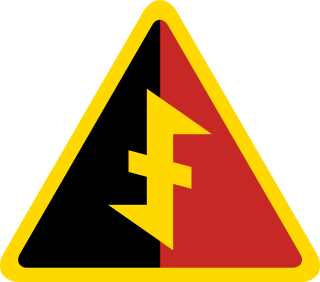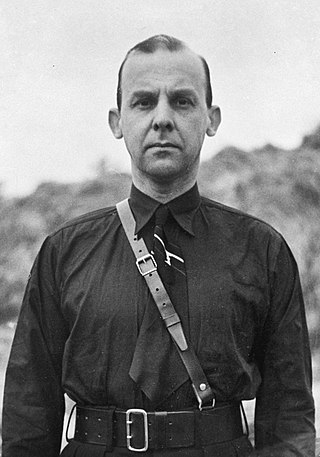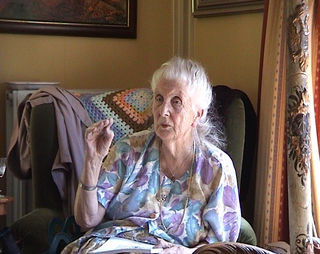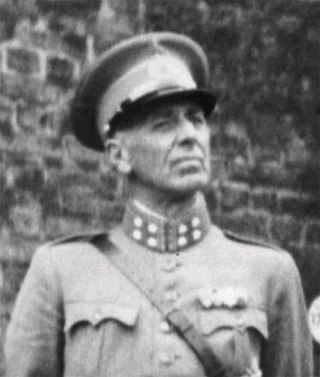
Dr. Gerrit Willem Kastein (25 June 1910 - 21 February 1943) was a Dutch communist, neurologist and resistance fighter and leader during World War II.

Dr. Gerrit Willem Kastein (25 June 1910 - 21 February 1943) was a Dutch communist, neurologist and resistance fighter and leader during World War II.
Kastein was born in Zutphen, the eldest son of Albertus Gerhardus Kastein and Gerdina Leurink. He studied medicine and became a neurologist. He was married and had two children.
During the 1930s Kastein became an ardent Communist, who often gave lectures. For that reason he was being watched by the Dutch authorities. During the Spanish Civil War he joined the efforts as a general doctor, who along with a Dutch ambulance team provided assistance.
On returning to the Netherlands, he later provided medical assistance to fellow-communist Arie Kloostra during a riot in The Hague, whom he would later join in the Dutch resistance. Kastein was strongly against racism, and wrote a book on the subject.
Immediately after the Dutch capitulation, Kastein joined the Dutch resistance. On 17 May 1940 he attended the inaugural meeting of The Hague branch of the illegal CPN, at the home of Toon van der Kroft. During the meeting, the Spark Group was founded. Kastein was also one of the initiators of the medical Resistance. Kastein's sympathies and activities came under suspicion, and the first attempt to arrest him was on 2 September 1941. But forewarned, he went into hiding.
Kastein formed the Communist Dutch resistance group CS-6, named after their address Corellistraat 6 in Amsterdam, where the two brothers Boissevain lived. The members were: Jan Verleun; Pam Pooters; Reina Prinsen Geerligs; Leo Frijda; Hans Katan; Sape Kuipers; the brothers Jan Charles Boissevain and Gideon William Boissevain; their cousin Louis Boissevain.
Kastein also chose to work closely with non-communist resistance groups. He gathered extensive pictures of German coastal defences along the Dutch coast, and planned to send them to the Dutch government in exile in London via a neutral Swedish ship via Gothenburg. He was provided with a contact in the form of Anton van der Waals , who was also a double-agent for the Sicherheitsdienst (SD). This meant that the Germans gained a copy of the film, which was altered before being forwarded via Kees Dutilh.
After Hitler had approved Anton Mussert as "Leider van het Nederlandse Volk" (Leader of the Dutch People) in December 1942, he was allowed to form a national government institute, a Dutch shadow cabinet called "Gemachtigden van den Leider", which would advise Reichskommissar Arthur Seyss-Inquart from 1 February 1943. The institute would consist of a number of deputies in charge of defined functions or departments within the administration. [1]
On 4 February Retired General and Rijkscommissaris Hendrik Seyffardt, already head of the Dutch SS volunteer group Vrijwilligerslegioen Nederland , was announced through the press as “Deputy for Special Services”. As a result, CS-6 concluded that the new institute would eventually lead to a National-Socialist government, which would then introduce general conscription to enable the call-up of Dutch nationals to the Eastern Front. [1] However, in reality the Nazis only saw Mussert and the NSB as a useful Dutch tool to enable general co-operation. Furthermore, Seyss-Inquart had assured Mussert after his December 1942 meeting with Hitler that general conscription was not on the agenda. [1] However, CS-6 assessed that Seyffardt was the first person within the new institute eligible for an attack, after the heavily secured Mussert. [1]
After approval from the Dutch government in exile, on the evening of Friday 5 February 1943, after answering a knock at his front door in Scheveningen, The Hague Seyffardt was shot twice by student Jan Verleun who had accompanied Kastein on the mission. In the later Nazi lawsuit against Verleun, he declared that he was accompanied by Kastein, while other sources suggest that Leo Frijda accompanied him in the attack and that Kastein was only present during preparation. A day later Seyffardt succumbed to his injuries in hospital. [1] A private military ceremony was arranged at the Binnenhof, attended by family and friends and with Mussert in attendance, after which Seyffardt was cremated. [1]
On 7 February, CS-6 shot fellow institute member “Gemachtigde voor de Volksvoorlichting” (Attorney for the national relations) Hermannus Reydon and his wife. His wife died on the spot, while Reydon died on 24 August of his injuries. [1] The gun used in this attack had been given to Kastein by SD agent Anton van der Waals, and was used to track Kastein. [1]
Seyffardt and Reydon's deaths led to massive Nazi Germany reprisals in the occupied Netherlands, under Operation Silbertanne. SS General Hanns Albin Rauter immediately ordered the murder of 50 Dutch hostages and a series of raids on Dutch universities. [2] By accident the Dutch resistance had attacked Rauter's car on 6 March 1945, which in turn led to the killings at De Woeste Hoeve, where 117 men were rounded up and executed at the site of the ambush and another 147 Gestapo prisoners executed elsewhere. [3] A similar war crime occurred on 1–2 October 1944, in the village of Putten, where over 600 men were deported to camps to be killed in retaliation for resistance activity in the Putten raid. [4]
On 19 February 1943, Kastein was scheduled to meet fellow CS-6 member Piet Wapperom in De Kroon public house, Delft. However, Wapperom had been arrested by the SD Rotterdam in Utrecht, where a subsequent search of his rooms found a notebook with details of the meeting with Kastein. Compromised, Wapperom agreed to co-operate, but the SD also tied a broomstick down his trousers to ensure that he could not escape. After entering the public house as agreed at 10:00, Kastein was arrested.
Taken to a waiting car, he was placed in the back with Ernst Knorr of The Hague SD. A struggle ensued, in which Kastein managed to seriously shoot Knorr. A subsequent search of Kastein at the local SD offices found a notebook scheduling a second meeting that day with fellow Dutch resistance member "Luc" at a cafe near the Binnenhof. Kastein agreed to cooperate, with the meeting scheduled to take place at a coffee shop in Voorburg, The Hague. Taken there in a car by SD agent John Hoffman, a struggle ensued during the journey where by Kastein shot SD agent Martin Kohlen who was driving the car in the leg. Kastein then tried to make an escape, but was quickly recaptured, although four resistance members who exited the cafe attempted to rescue him.
On the return journey to the Binnenhof, Kastein tried to retrieve a hidden weapon from his body, but it bounced out and was taken by the SD agents. Placed in an interrogation room and tied to a chair, while left alone he jumped through a closed second floor window while still attached to the chair. On landing he fractured his skull and died a few hours later. A colleague of Kastein from another hospital and the wife of another colleague attended him and were witnesses to his injuries and death.
After the war, it emerged that Luc was in fact a pseudonym for Anton van der Waals. It was hence interpreted that Kastein had recognised Van der Waals as a double agent, and had set up the meeting to interrogate the traitor.

Dr. Gerrit Willem Kastein was posthumously awarded the Dutch Cross of Resistance. He is buried in the National Cemetery of Honours in Loenen. [5]

The National Socialist Movement in the Netherlands was a Dutch fascist and later Nazi political organisation that eventually became a political party. As a parliamentary party participating in legislative elections, the NSB had some success during the 1930s. Under German occupation, it remained the only legal party in the Netherlands during most of the Second World War.

Anton Adriaan Mussert was a Dutch politician who co-founded the National Socialist Movement in the Netherlands (NSB) in 1931 and served as its leader until the party was banned in 1945. As such, he was the most prominent Dutch leader of the National Socialism movement before and during World War II. Mussert collaborated with the German occupation government, but was granted little actual power and held the nominal title of Leider van het Nederlandsche Volk from 1942 onwards. In May 1945, as the war came to an end in Europe, Mussert was captured and arrested by Allied forces. He was charged and convicted of treason, and was executed in 1946.

The Dutch resistance to the German occupation of the Netherlands during World War II can be mainly characterized as non-violent. The primary organizers were the Communist Party, churches, and independent groups. Over 300,000 people were hidden from German authorities in the autumn of 1944 by 60,000 to 200,000 illegal landlords and caretakers. These activities were tolerated knowingly by some one million people, including a few individuals among German occupiers and military.

The National Socialist Dutch Workers Party or NSNAP was a minor Dutch Nazi party founded in 1931 and led by Ernst Herman van Rappard. Seeking to copy the fascism of others, notably Adolf Hitler, the group failed to achieve success and was accused by rivals such as the National Socialist Movement in the Netherlands (NSB) and the General Dutch Fascist League of being too moderate for a fascist movement.

Meinoud Marinus Rost van Tonningen was a Dutch politician of the National Socialist Movement (NSB). During the German occupation of the Netherlands in World War II, he collaborated extensively with the German occupation forces. He was the husband of Florentine Rost van Tonningen.

Johannes Hendrik Feldmeijer was a Dutch Nazi politician and a member of the NSB. He was the commander of the Sonderkommando-Feldmeijer death squad during Operation Silbertanne.

Hoenderloo is a Dutch village located south west of the city of Apeldoorn. Most of the village is part of the municipality of Apeldoorn, but a small part belongs to the municipality of Ede, among which the hamlet Hoog Baarlo.

The Reichskommissariat Niederlande was the civilian occupation regime set up by Germany in the German-occupied Netherlands during World War II. Its full title was the Reich Commissariat for the Occupied Dutch Territories. The administration was headed by Arthur Seyss-Inquart, formerly the last chancellor of Austria before initiating its annexation by Germany.

Florentine Sophie Rost van Tonningen was the wife of Meinoud Marinus Rost von Tonningen, the second leader of the National Socialist Movement in the Netherlands (NSB) and President of the National Bank during the German occupation (1941–1945). Because she continued to support and propagate the ideals of Nazism after World War II and the death of her husband, she became known in the Netherlands as the "Black Widow".
Operation Silbertanne was the codename of a series of executions that were committed between September 1943 and September 1944 during the German occupation of the Netherlands. The executions were carried out by a death squad composed of Dutch members of the SS and Dutch veterans of the Eastern Front.

Folkert Evert Posthuma was a Dutch politician.

Robert van Genechten was a Belgian-born Dutch politician and writer and a leading collaborator during the German occupation of the Netherlands.

Hendrik Alexander Seyffardt was a Dutch general, who during World War II collaborated with Nazi Germany during the occupation of the Netherlands, most notably as a figurehead of the Volunteer Legion Netherlands, a unit of the Waffen-SS on the Eastern Front.

Hendrik Evert Koot was a Dutch collaborator with the German occupying forces during World War II. A member of the WA, the paramilitary wing of the National Socialist Movement in the Netherlands (NSB), he was beaten up by members of a local knokploeg in Amsterdam on 11 February 1941. His injuries were so severe that he died a few days later. His death was seized by the German authorities to start raids in the Jodenbuurt, the Amsterdam Jewish quarters, which in turn led to the February strike. Another element of Nazi retaliation was the installation of a Judenrat in Amsterdam: the Jewish Council of Amsterdam.

Wilhelm (Willi) Friedrich Adolf Ritterbusch, was a Nazi Party political functionary. Among other positions, he was the German Generalkommissar zur Besonderen Verwendung, directing the political affairs and propaganda in the occupied Netherlands from the middle of July 1943 until 7 May 1945, the end of World War II.
Events in the year 1944 in the Netherlands.
This timeline is about events during World War II of direct significance to the Netherlands. For a larger perspective, see Timeline of World War II.

The Netherlands Chamber of Culture was an institution established by Nazi Germany in the occupied Netherlands to regulate the production and distribution of art. Officially established on 25 November 1941, the chamber followed the model of the Reich Chamber of Culture in Germany and began operations on 22 January 1942. By 1 April of that year, all persons and institutions involved in the arts were required to register, with the former being demanded to submit an Aryan certificate and the latter being compelled to align their regulations with those of the chamber. By August 1944, the chamber had 42,000 registered members, from prominent artists to organ grinders.

Tobie Goedewaagen was a Dutch philosopher and politician. He served as the first secretary general of the Department of Public Information and the Arts, an institution established by the Nazi German occupation government, and led the Nederlandsche Kultuurkamer that had been established by the regime.

Hermannus Reydon was a Dutch journalist and Nazi collaborator. He served as the second Secretary-General of the Department of Public Information and the Arts, which had been established by the civilian regime installed in the Netherlands by Nazi Germany during the occupation.